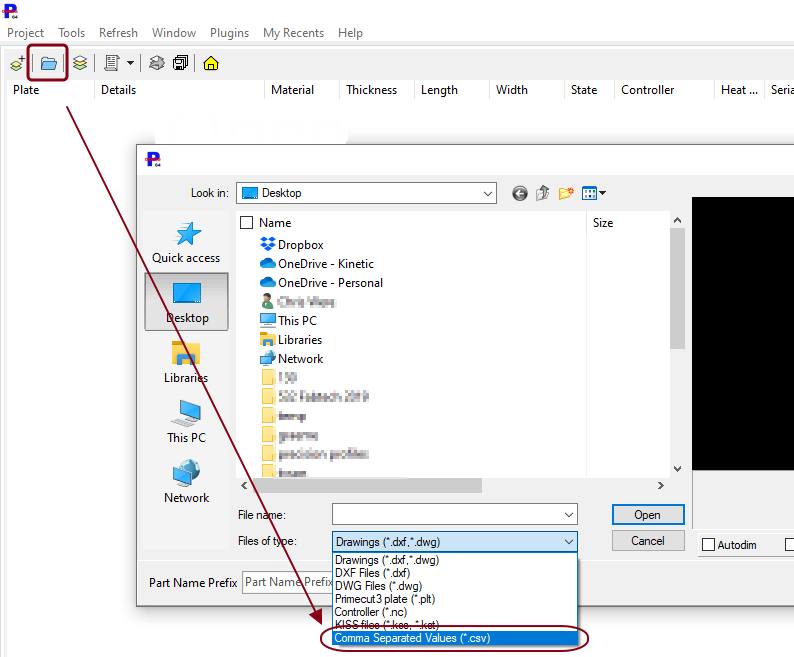Multiple plates can be imported at once by means of csv speadsheets.
In Plate Stock Mode, click the Open button and select CSV as the file type:

Several csv formats are supported, and they may be mixed together so long as certain columns are blank. eg don't have a row with an filename and a templateName set, don't have a row with a filename and length or width set. etc
csv files can be created in a text editor, via a spreadsheet editor such as MS Excel, or may be generated programmatically by 3rd party software.
Note Primecut can also read KISS files that some MRP systems can export.
The csv files should have a header row. The column names in [square brackets] below are optional (don't use the square brackets if using these column names).
Generic Plate Format
[Filename], [Platename], [material], [thickness], [qty], [length, width,] [templatename], [heatNumber], [serialNumber], [supplier], [dateReceived], [location], [costPerMass]
PlateName is the name that will be given to the plate. If not specified it will be the filename. If not specified it will autoname it based on length and width.
If Filename is set it will set the Plate's name property. If Platename is set it will set (and if filename also set, will override) the plate's name property.
If qty is not present it is assumed to be 1.
In each row at least one of filename, (Length and Width), templatename must be present.
Units for Plate Import
For this "customer facing" import, the Length, Width and Thickness will use the current display units in effect in Primecut. You can override the units by appending mm, m, INCH, ", ft etc.
costPerMass is in $/kg if running in metric, or $/lb if running in imperial mode.
Explicit Plate Format Specifying Plate Lengths and Widths
Length, Width, material, thickness, [Platename], [qty], [heatNumber], [serialNumber], [supplier], [dateReceived], [location], [costPerMass]
Template Based Plate Format
In the template format, material and thicknbess, length and width and filename are nott needed, as all this information is stored in the referenced plate template
templateName, [qty], [heatNumber], [serialNumber], [supplier], [dateReceived], [costPerMass]
The templatename must match an existing plate template name in the database.
Drawing Based Plate format (especially for Remnants)
fileName, material, thickness, [Platename], [qty], [heatNumber], [serialNumber], [supplier], [dateReceived], [location], [costPerMass]